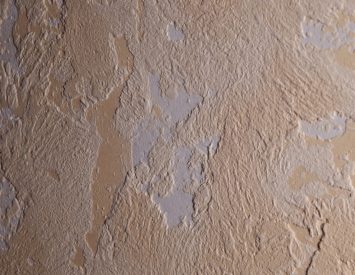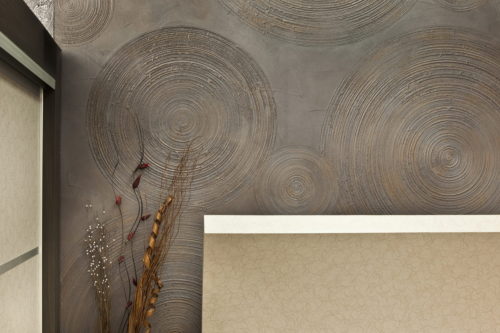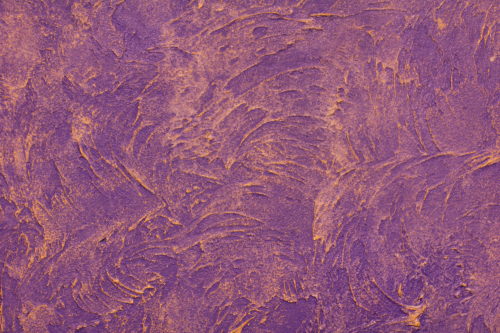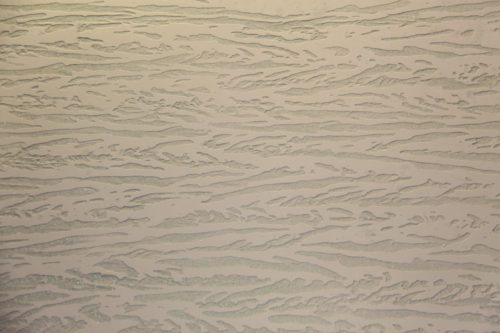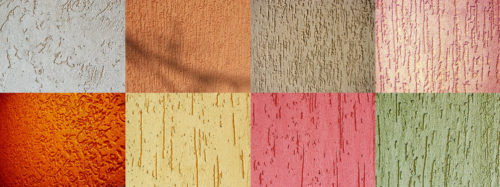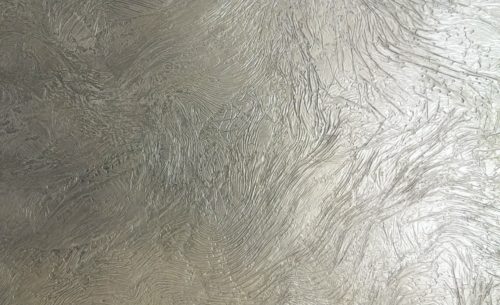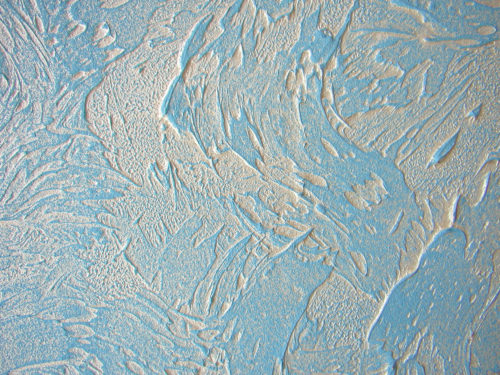Today, for the owners there are almost all the conditions in order to get a unique home design. You can find hundreds of variants of certain materials that can be applied to the decor. However, the main task is to use existing resources with the mind, while ensuring an attractive style of space.
Content
- Need to decorating the wall
- Advantages of embossed decorative plaster
- Choice of plaster for decorating wall
- Cooking mix for decorating wall
- Preparation of the surface of the wall to the decor
- Applying the first layer on the wall
- Wall Decor Establishment
- Painting the surface of the wall
- Polishing wall
Many people are accustomed to resorting to the help of professionals, but often these services are too expensive, so sometimes it makes sense to risk and try to transform space itself. Just as the enthusiasm to start work is not worth it. Possible options, scenarios, materials, as well as technology application of decorative materials are studied.
In this article we will look at the most successful solutions related to decorated the walls with his own hands. The first will focus on the embossed surface finishes.
The need for decorating walls
It is worth understanding that it makes sense to decorate the walls not everywhere, you need to pay attention to several important factors:
- Small rooms often do not need a decorative wall decoration, and even more we can not go about the embossed decor. The thing is that it can visually reduce space, and it is not the best idea. Perhaps this situation makes sense in decorating on the basis of mirror or glossy elements that will allow you to look at the room from the new side.
- Use too unusual decor tools can only be justified if we have a large space with a certain style. But in this case, the created wall design must match all the dwelling, otherwise the house will lose an important "highlight".
- Too large rooms also rarely give up relief decor. The thing is that such work will take too much time, forces, materials, and, of course, money. Ultimately, such a space may not look better. The large room corresponds to large elements with a clear geometric shape.
Advantages of embossed decorative plaster
Unlike many other types of plaster, relief has a number of advantages, due to which it is preferable to create a unique surface style.
- This is a practical material based on which you can create practically any solutions associated with texture, relief and other surface features. Do not forget that in most cases enough minimal relief in order to realize the design.
- Relief stucco may be far from the last layer to create a surface style. The fact is that the paint, tile elements and much more are often applied on top of the embossed plaster. There are practically no restrictions on this issue, so it all depends on the fantasy of the owners who carry out repairs.
- Often the characteristics of the embossed decorative plaster are such that it will not be easy to damage it. It has a certain level of protection against mechanical impacts, thanks to which you can not be afraid of damaging the beautiful surface. In addition, the material is often confirmed by the effects of moisture, and also provides a good level of thermal insulation.
- If the walls that the owners want to pose a decor, have small irregularities, relief plaster here will be useful. However, it is not necessary to think that large potholes this product will also hide. In this case, it makes sense to carry out full alignment, thanks to which the wall will become suitable for further action.
Choice of plaster for decorating wall
It should be borne in mind that relief plaster is divided into structural and textured.
- Texture plaster is the best option for creative people who can create almost any surface using special tools. Interestingly, on the basis of this material, you can create entire surround images, but for this you need to have a lot of experience.
- Structural plaster is also an excellent solution for the decor. The appearance of the surface depends on the magnitude of the crystals. With a special grater, special patterns are created, which make the surface of monotonous, but at the same time attractive externally. The most famous solution is "Coroed". Such plaster is found in a wide variety of places, but has long been used as an external decoration of shops, offices, etc.
Cooking mix for decorating wall
In this case, do not invent anything. Together with the products there is a detailed instruction in which each step is indicated, as well as cautions associated with possible errors. It can only be noted that there was often cases when the owners decided to knead the plaster on their own technology, and this led to a complete failure. The thing is that each mixture has its own specific composition.
Preparation of the surface of the wall to the decor
- At the very beginning you need to get rid of the old surface. It can be wallpaper, tile, old decorative plaster or something else. From the past material there should be no trace, as it can negatively affect the new trim.
- If the old plaster is in an acceptable state, then it can be left, but should check its durability. To do this, you need to catch the entire wall with a metal object, and if any voids are not heard, then everything is in order.
- Walls often have various cracks, chips and many other disadvantages that can significantly harm the future decorative surface. Cracked is advisable to lure with a solution. With potholes about the same situation. Bad if damage is too large. Then you have to carry out large-scale work that can delay long days.
- After the solution applied to the wall, dry, it is necessary to use the primer of deep penetration. The choice of primer depends only on what we have the surface.
- In addition, to protect against the appearance of mold, it makes sense to treat the wall with an antiseptic agent.
Of course, the most important thing in the preparation process is cleaning the surface from dirt and dust. Even if the owners decide to apply plaster directly to the unprepared surface, the clean wall will provide a good clutch.
Applying the first layer on the wall
It is important to keep in mind that if the old plaster remains, you can start working directly from applying a decorative layer. In other cases, everything starts with the first "rough" layer.
- The first layer is often the compositions that will allow to align the surface. Even if an externally wall looks smooth, some irregularities can manifest. As a first layer, a plaster based on cement is used.
- Too thick, this layer should not be. Everything is limited to the need for surface leveling. But there are cases when irregularities are too large, then the first layer of plaster can reach 6 cm. In too launched situations, it makes sense to pay attention to the possibility of separating the first layer - to apply it in several goals.
- If the minimum irregularities, it makes sense to take advantage of the long rule. With it, the application of the material happens quickly, and the surface is immediately aligned. In general, if we talk about this embodiment of the first layer, the entire amount of work may limit the minimum time.
Wall Decor Establishment
- Immediately after the first layer of the material is dried, you can begin the applying of the decorative layer. This is the most responsible in terms of the appearance of the stage.
- The application of the composition takes place with the help of Kelma and Terok. Ultimately, the main task is based on the creation of relief. It can be created by different tools. These are brushes, and graters, and even their own hands, if there is no special choice, or the project was originally conceived quite specific.
- The creation of the relief is slow, but it should be remembered that gradually the composition is hardening, therefore it is not worth a long time to stretch the work. Too strong relief differences are also not done, since this may suffer from this all appearance of the room.
- There are special plasters, which includes minerals. If you apply this mixture on the wall, then the texture is formed by itself. It turns out a rather original, but attractive surface. You can make small adjustments with your own hands, but you need to not overdo it.
Painting the surface of the wall
- Relief plaster is often covered with facade paint. The situation is such that the plaster itself will be unfasteless enough if it does not have a protective layer. It is paint that is the very defense.
- In this case, regardless of the invoice, a small brush is used, with which the recesses and hills are painted.
- After we led the wall painting, all the features of the relief will be clearly visible - it is precisely this effect that the owners are often achieved.
- Of course, no one forbids to apply different colors on the surface, but often this is too risky idea, with which only a professional can cope with
Polishing wall
- If the matte surface of the wall is not very popular, you can pay attention to the polishing. This solution is used regularly, but it is worth understanding that the shine of the surface is not always combined with the general design of the room or the whole house.
- For polishing on sale you can find special wax-based products. They are applied in different ways, but it should be borne in mind that it depends on the product brand, how much bright will be the surface, and there will be clear glossy elements.
- After polishing, the protruding elements of the relief will especially be highlighted. If they are too large, it will focus on yourself.
